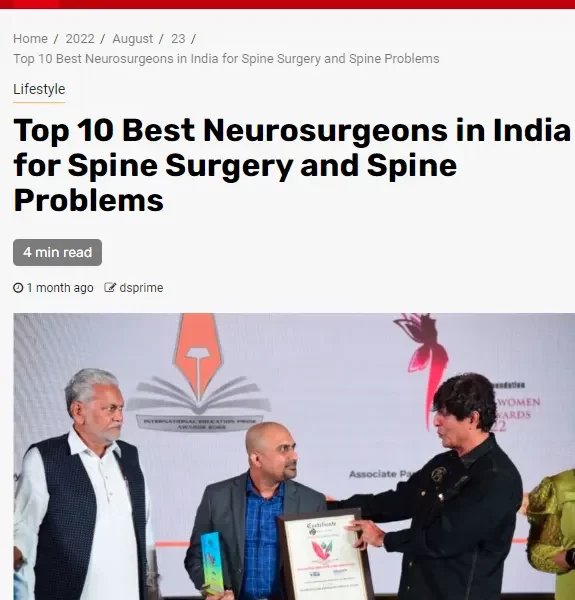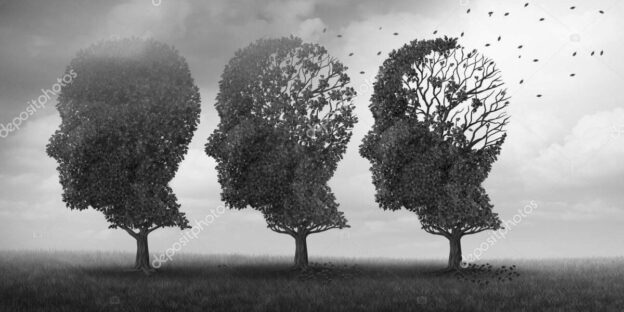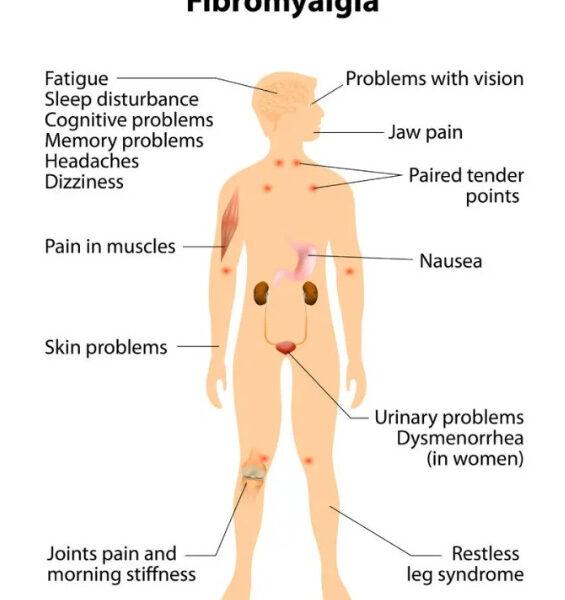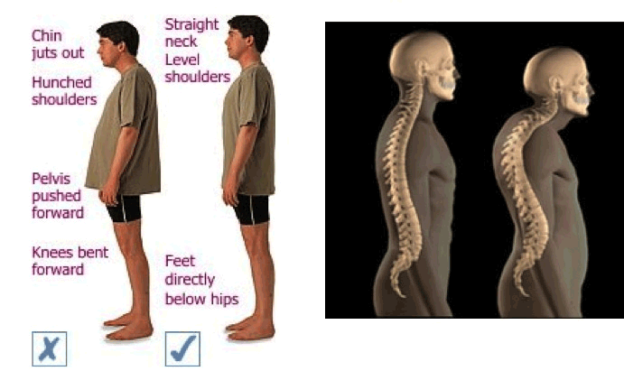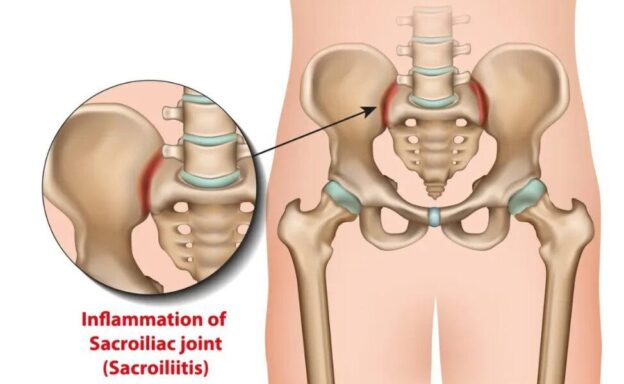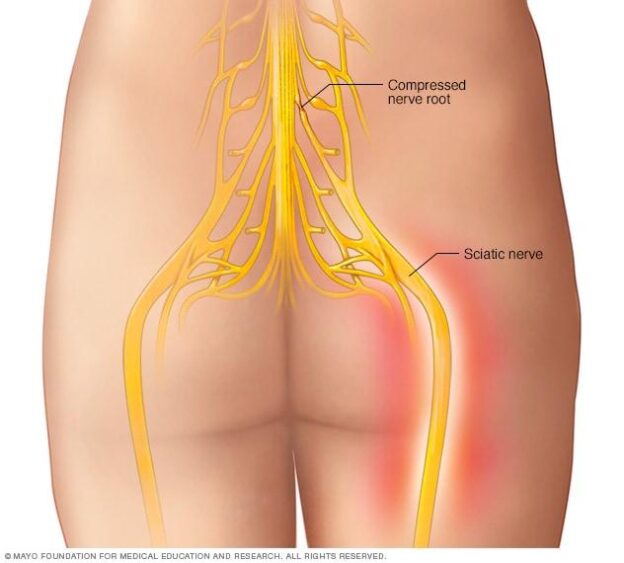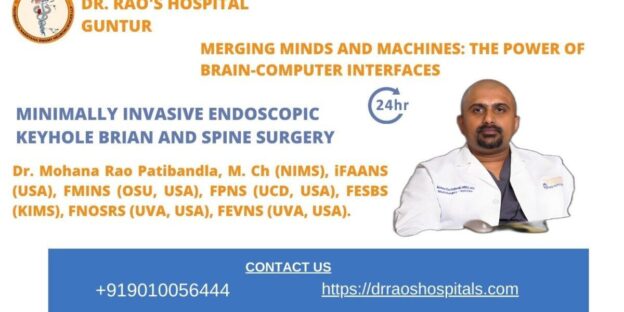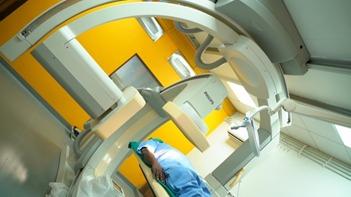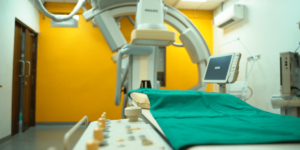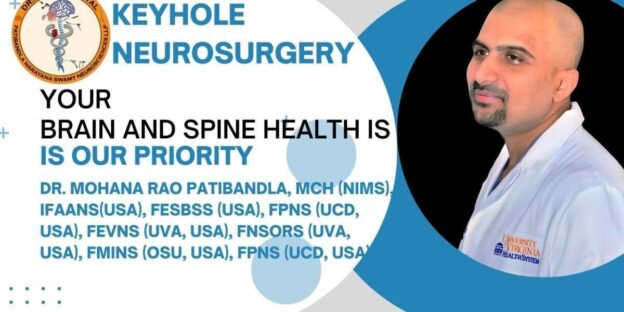Sciatica
Sciatica is a pain caused in the back of the leg due to irritation and inflammation secondary to nerve compression. The two most common causes of sciatica are herniated discs or lumbar canal stenosis. 8 out of 10 people’s pain decreases without surgery. Sciatica is a common condition that can cause pain in the lower back and legs. This article will discuss the causes, symptoms, and treatment options for sciatica. Dr. Rao’s hospital is the place to go for spine surgery or spinal surgery treatment in Guntur, Andhra Pradesh, or India. Dr. Mohana Rao Patibandla is the best spine surgeon in Guntur and Andhra Pradesh.
What is sciatica?
The sciatic nerve is the thickest in the back, originating from the lower two lumbar or upper three sacral nerves. The irritation or inflammation leads to nerve pain and is called sciatica. The pain generally starts in the back or gluteals and then goes back to the bottom of the leg. Actual injury to the Sciatic nerve is rare, but the compression leads to pain. Sciatic compression may cause weakness of the leg and foot and tingling or unpleasant sensation in the leg and foot.
What does sciatica pain feel like?
Pain is burning or stabbing or electric or sharp shooting or jolts of pain. Pain may be intermittent or constant, more in the leg than the back, increasing with sitting or standing for a prolonged time, twisting the body, coughing, or sneezing.
Can sciatica occur down both legs?
Generally, bilateral nerve compression is rare but can occur sometimes and may present bilaterally.
Does it take time to develop?
Sciatica may be sudden or gradual.
How common is sciatica?
Back pain is one of the most common complaints to visit the hospital, and there is a 40% chance that every person will feel sciatica in their lifetime.
What are the risk factors for sciatica?
Accident or injury or trauma to the back
Aging
Overweight or obese
Weak core muscles, that is, the abdomen and back
Weight lifting
Prolonged sitting
Poor posture in Gym or workplace
Osteoarthritis
Diabetes
Sedentary lifestyle
Smoking
Is the weight of pregnancy the reason why so many pregnant women get sciatica?
Ligaments loosening due to hormones is the main reason for developing sciatica.
SYMPTOMS AND CAUSES
What causes sciatica?
A herniated or slipped disk – the most common cause
Spinal stenosis
Spondylolisthesis
Osteoarthritis of aging with bone spurs
Trauma
Tumors
Piriformis syndrome
Cauda equina syndrome
What are the symptoms of sciatica?
Pain radiating down the leg
tingling numbness, pins and needles sensation in the legs radiating downwards
pain worsens with movement
Bowel and bladder incontinence
DIAGNOSIS AND TESTS
Medical History
Straight leg raise test
FABER Test
Spinal X-rays – Flexion and extension
Magnetic resonance imaging (MRI) – will note detailed soft tissue problems, disc desiccation, disc prolapse, and ligamentum flavum hypertrophy.
Computed tomography (CT) scans fractures, infection, to know more about bony pathology.
Nerve conduction velocity studies (NCV) or electromyography (EMG)
Myelogram if MRI is contraindicated
MANAGEMENT AND TREATMENT
How is sciatica treated?
The goal of treatment is to increase mobility and decrease pain; 8 out of 10 cases don’t need surgery.
Conservative management or self-care treatments:
Appling ice and hot packs: 20 min of hot or cold packs, switching between the hot and cold several times a day.
Taking over-the-counter medicines: non-steroidal anti-inflammatory drugs (NSAIDs)
Performing gentle stretches: Core muscle strengthening
How long can a patient wait to go to a Neurosurgeon?
Every person with sciatic pain is different. Typically, six weeks of conservative management.
Muscle relaxants: cyclobenzaprine, tricyclic antidepressants, and anti-seizure medications.
Physical therapy: Stretching and aerobic exercises
Spinal injections: Corticosteroid and lidocaine mixture
When is surgery considered?
Indication of surgery is alarming symptoms like increasing pain severity even after six weeks, the development of weakness, or bowel or bladder incontinence. A neurosurgeon can do surgery immediately if a patient develops bowel or bladder symptoms or cauda equina syndrome.
The goal of the surgery is to decompress the nerve and stabilize the spine.
Surgical options to relieve sciatica include:
Microdiscectomy
Laminectomy
Transforaminal lumbar interbody fusion
How long does the surgery take, and what’s the typical recovery time?
Laminectomy and Discectomy (endoscopic or microscopic) – generally take one to two hours to perform. Recovery time is around six weeks.
What are the complications of spinal surgery?
Blood clots.
Bleeding.
Infection.
Spinal fluid leak
Nerve damage.
Bladder or bowel control incontinence.
What complications are associated with sciatica?
Developing chronic pain
Foot drop
Loss of feeling in the legs
bowel or bladder disturbance
call the Neurosurgeon immediately if anything develops
PREVENTION
Can sciatica be prevented?
Maintain good posture
Don’t smoke:
Maintain a healthy weight
Exercise regularly: strengthen your core
Activities that don’t hurt your back
Keep yourself safe from falls
OUTLOOK / PROGNOSIS
What can I expect if I have been diagnosed with sciatica?
The good news is that it goes on its own. Eight out of 10 people don’t need surgery, improve in the first six weeks, and rarely need surgery.
LIVING WITH
When should I contact my healthcare provider?
Severe leg pain increases even after six weeks, or excruciating pain lasting more than a few hours.
Muscle weakness or Numbness in the same leg.
Bowel or bladder incontinence
Cauda equina syndrome
Trauma
infection
Is the sciatic nerve the only source of “sciatica” pain?
No, upper or lower roots can also cause symptoms and are considered sciatica.
How can I tell if the pain in my hip is a hip issue or sciatica?
FABER test
Is radiculopathy the same as sciatica?
Radiculopathy and sciatica are interchangeable words.
Should I rest if I have sciatica?
2 to 3 days of activity restriction is advised, but not bed rest
Can sciatica cause my leg and ankle to swell?
Yes, it might cause swelling.
Sciatica is a pain in the back of the leg caused by irritation and inflammation secondary to nerve compression. The two most common causes of sciatica are herniated discs and lumbar canal stenosis. Six weeks of conservative treatment will reduce pain in most people. Eight out of 10 people’s pain decreases without surgery. Dr. Rao’s hospital is for spine surgery and spinal surgery treatment in Guntur, Andhra Pradesh, India. Dr. Mohana Rao Patibandla is the best spine surgeon in Guntur and Andhra Pradesh.

